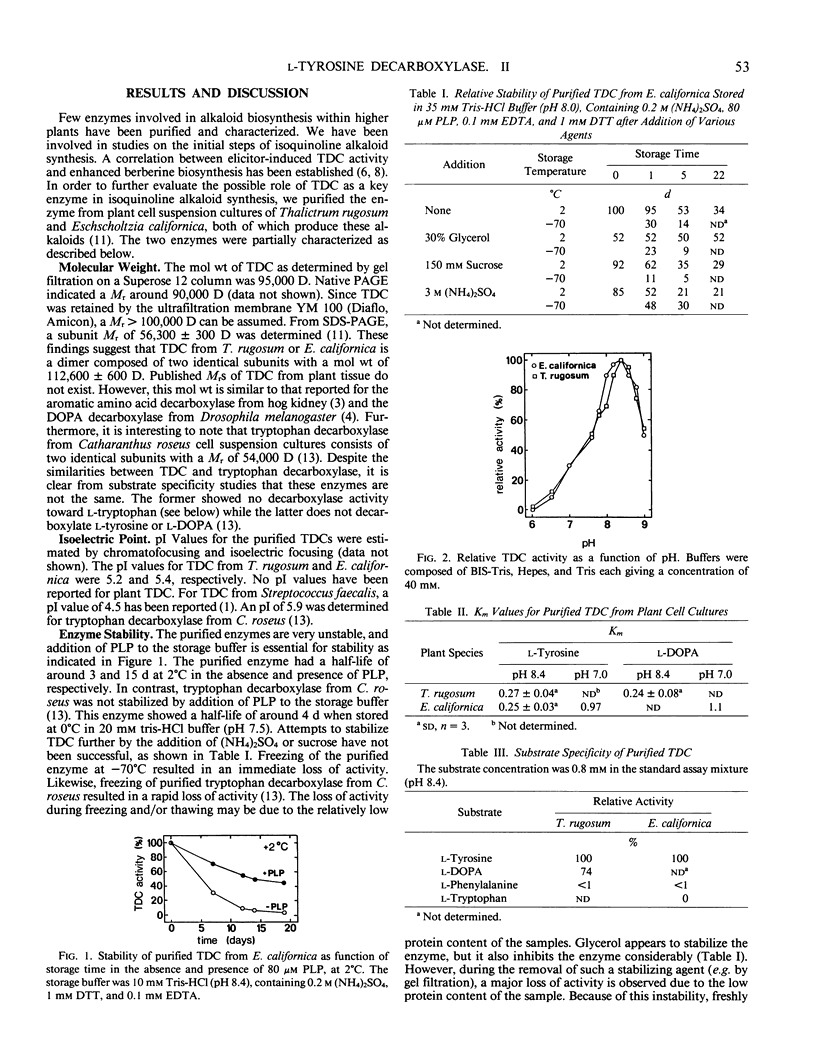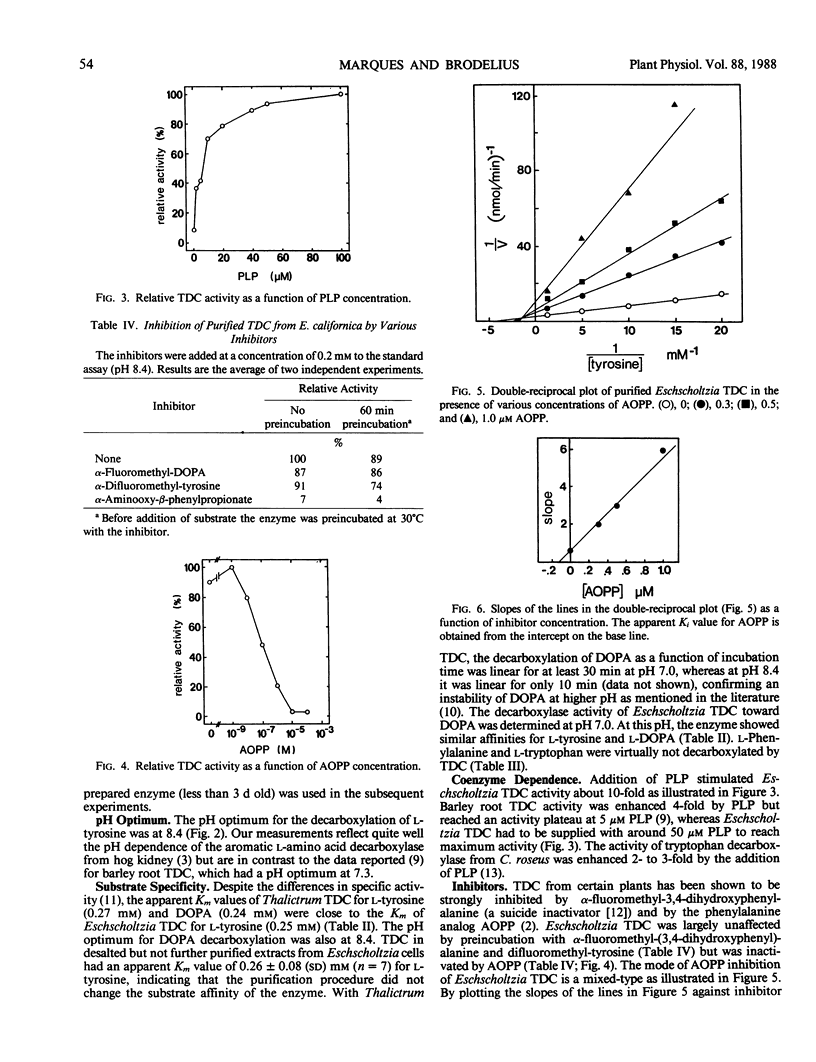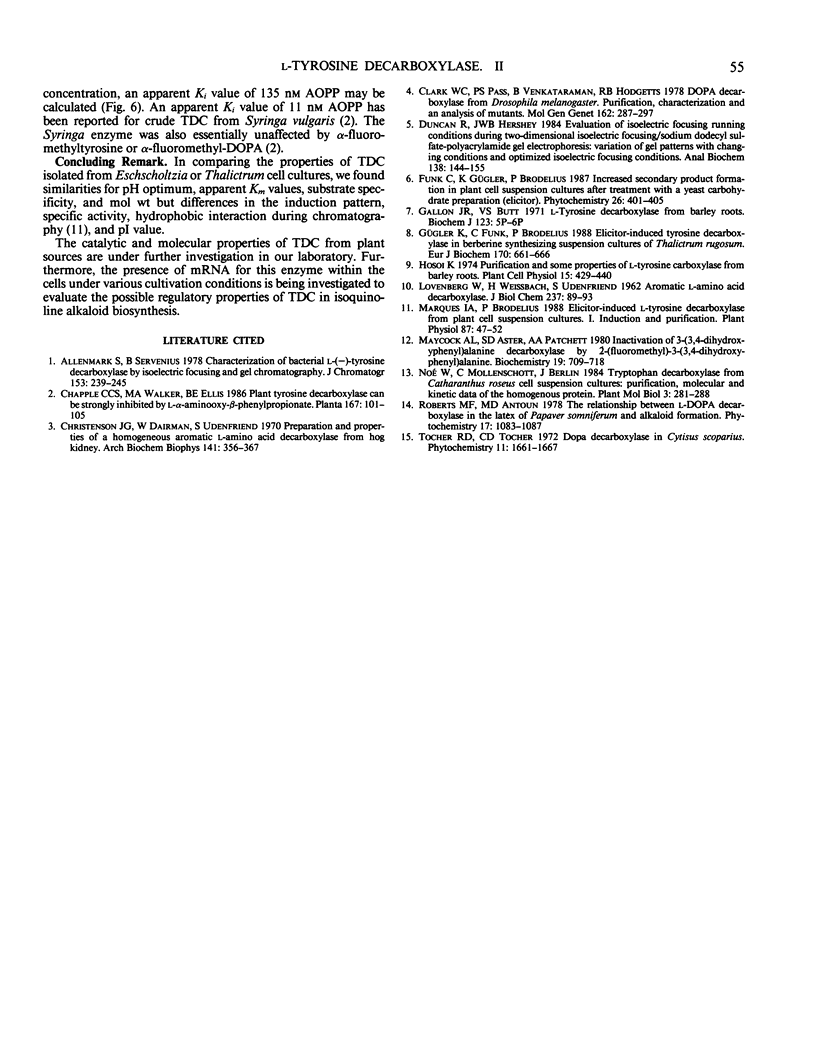Abstract
Properties of purified l-tyrosine decarboxylase (EC 4.1.1.25) from elicitor-induced cell suspension cultures of Eschscholtzia californica Cham. and Thalictrum rugosum Ait. are described. l-Tyrosine decarboxylase is a dimeric enzyme with a molecular weight of 112,600 ± 600 daltons. The isoelectric point was estimated to be at pH 5.2 and pH 5.4 for the enzyme from E. californica and T. rugosum, respectively. The purified enzymes were stabilized in the presence of pyridoxal-5-phosphate. Optimum pH for the enzyme from both plants was found to be 8.4. Enzyme activity was dependent on exogeneously supplied pyridoxal-5-phosphate. The enzyme decarboxylated l-tyrosine and l-β-3,4-dihydroxyphenylalanine but was inactive toward l-phenylalanine and l-tryptophan. Apparent Km values of Eschscholtzia- and Thalictrum-decarboxylase for l-tyrosine were 0.25 ± 0.03 and 0.27 ± 0.04 millimolar, respectively. Similar affinities were found for l-3,4-dihydroxyphenylalanine. Eschscholtzial-tyrosine decarboxylase was strongly inhibited by the phenylalanine analogue l-α-aminooxy-β-phenylpropionate and largely unaffected by d,l-α-monofluoromethyl-3,4-dihydroxyphenylalanine and α-difluoromethyltyrosine.
Full text
PDF



Selected References
These references are in PubMed. This may not be the complete list of references from this article.
- Allenmark S., Servenius B. Characterization of bacterial L-(-)-tyrosine decarboxylase by isoelectric focusing and gel chromatography. J Chromatogr. 1978 Jun 1;153(1):238–245. doi: 10.1016/s0021-9673(00)89878-7. [DOI] [PubMed] [Google Scholar]
- Christenson J. G., Dairman W., Udenfriend S. Preparation and properties of a homogeneous aromatic L-amino acid decarboxylase from hog kidney. Arch Biochem Biophys. 1970 Nov;141(1):356–367. doi: 10.1016/0003-9861(70)90144-x. [DOI] [PubMed] [Google Scholar]
- Duncan R., Hershey J. W. Evaluation of isoelectric focusing running conditions during two-dimensional isoelectric focusing/sodium dodecyl sulfate-polyacrylamide gel electrophoresis: variation of gel patterns with changing conditions and optimized isoelectric focusing conditions. Anal Biochem. 1984 Apr;138(1):144–155. doi: 10.1016/0003-2697(84)90783-8. [DOI] [PubMed] [Google Scholar]
- Gügler K., Funk C., Brodelius P. Elicitor-induced tyrosine decarboxylase in berberine-synthesizing suspension cultures of Thalictrum rugosum. Eur J Biochem. 1988 Jan 4;170(3):661–666. doi: 10.1111/j.1432-1033.1988.tb13748.x. [DOI] [PubMed] [Google Scholar]
- LOVENBERG W., WEISSBACH H., UDENFRIEND S. Aromatic L-amino acid decarboxylase. J Biol Chem. 1962 Jan;237:89–93. [PubMed] [Google Scholar]
- Maycock A. L., Aster S. D., Patchett A. A. Inactivation of 3-(3,4-dihydroxyphenyl)alanine decarboxylase by 2-(fluoromethyl)-3-(3,4-dihydroxyphenyl)alanine. Biochemistry. 1980 Feb 19;19(4):709–718. doi: 10.1021/bi00545a016. [DOI] [PubMed] [Google Scholar]


